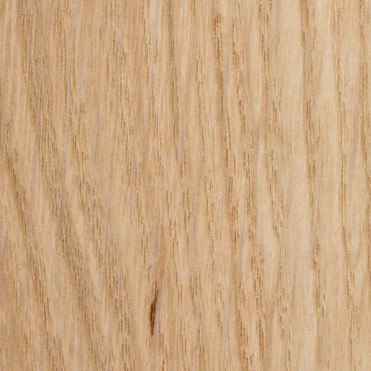Timber Click-on Battens Tech Info
The information on this page is specific to steam bent timber battens. For all other information on the use of timber battens, see our Timber Click-on Battens technical information page. These products can be used together – eg. ceiling to curved bulkheads.
Profiles available for Steam Bending
Block

*30x30mm not available in Spotted Gum
Dome

* 30x30mm not available in Spotted Gum.
Design curved spaces with Grasshopper
Species and Coatings
Due to the steam bending process, we offer a limited range of timber species of coatings in our curved range. As with our entire range of products, custom solutions are available. Contact us here to discuss how we can help with your project.
 American Oak
American Oak
 Clear Oil
Clear Oil
 Natural Accent - Clear
Natural Accent - Clear
 Natural Accent - Natural Tone
Natural Accent - Natural Tone
 Natural Accent - Ochre
Natural Accent - Ochre
 Natural Accent - Mist Grey
Natural Accent - Mist Grey
 Natural Accent - Rich Mocha
Natural Accent - Rich Mocha
 Natural Accent - Whitewash
Natural Accent - Whitewash
 Natural Accent - Storm Grey
Natural Accent - Storm Grey
 Natural Accent - Blackwash
Natural Accent - Blackwash
 Natural Accent - Double Black
Natural Accent - Double Black
 Spotted Gum
Spotted Gum
 Clear Oil
Clear Oil
 Natural Accent - Clear
Natural Accent - Clear
 Natural Accent - Ochre
Natural Accent - Ochre
 Natural Accent - Mist Grey
Natural Accent - Mist Grey
 Natural Accent - Rich Mocha
Natural Accent - Rich Mocha
 Natural Accent - Blackwash
Natural Accent - Blackwash
 Natural Accent - Double Black
Natural Accent - Double Black
Curve Direction Options
Concave means “hollowed out or rounded inward” and is easily remembered because these surfaces “cave” in. The opposite is convex meaning “curved or rounded outward.” Both words have been around for centuries but are often mixed up.

Standard Radii
Each radius requires specialised equipment (formers) in order to produce the curved timber battens. To save on costs, we offer a range of radii as standard. Any custom radius within the parameters can be achieved, contact us to discuss your specific project requirements. Please also refer to the steam bending parameters table below.
Standard Inner Radii
- 300mm
- 400mm
- 500mm
- 600mm
- 700mm
- 800mm
- 1000mm

An important design consideration is with timber, being a natural product, its physical properties can vary as high as 30% or more. As the stress-relaxation properties of the timber relies on moisture content, lignan and fiber variation both through the timber section and across its length, the bend angle can vary up to 3 degrees. This phenomena is known as spring back.
Steam bending parameters
American Oak
| Profile/Size | Max angle | Min. Inner Radius (Concave) |
Min. Inner Radius (Convex) |
Max. Radii at 90° |
|---|---|---|---|---|
| Block 30x19mm | 90° | 300mm | 300mm | 1000mm |
| Block 40x19mm | 90° | 300mm | 300mm | 1000mm |
| Block 60x19mm | 90° | 300mm | 300mm | 1000mm |
| Dome 30x19mm* | 90° | 300mm | 300mm | 1000mm |
| Block 30x30mm | 90° | 500mm | 500mm | 1000mm |
| Dome 30x30mm* | 90° | 500mm | 500mm | 1000mm |
* Dome has a subtle flat spot on top due to the nature of the steam bending process.
Spotted Gum
| Profile/Size | Max angle | Min. Inner Radius (Concave) |
Min. Inner Radius (Convex) |
Max. Radii at 90° |
|---|---|---|---|---|
| Block 30x19mm | 90° | 700mm | 700mm | 1000mm |
| Dome 30x19mm* | 90° | 700mm | – | – |
| Block 40x19mm | 90° | 700mm | 700mm | 1000mm |
| Block 60x19mm | 90° | 700mm | 700mm | 1000mm |
* Dome has a subtle flat spot on top due to the nature of the steam bending process.
Customised solutions are available. Please contact us to discuss your specific project requirements.
Join Line Options
Aligned Joins
Aligned joins maintain the join line throughout the wall or ceiling, ensuring consistency.

Staggered Joins
Staggering the joins in the curved timber can lessen the disruption to the aesthetic, making it a perfect option for a ‘seamless’ look. 2 – 3 alternating curved battens are supplied, allowing the joins to be located at different locations which helps to blend the join line. The length of your required curved battens could affect your ability to achieve this. Please refer to our maximum and minimum length section.

Steam Bent Timber Details
Bulkhead Detail
Ceiling to Wall Transition
Minimum and Maximum Lengths
Our curved timber process limits the lengths of timber achievable. The maximum length achievable is 1800mm, where the minimum length is 1000mm. This can be trimmed on-site to suit requirements.
Minimum Order Quantity
We enforce a minimum order quantity of 100 steam bent battens to ensure the technical process remains viable. This works in conjunction with our overall MOQ of AU $5000. Find out more here.
Other Considerations
Compression marks
Due to the compression taking place in the grain of the timber during the stream bending process, compression marks may occur.

Imperfections in the curve
While the steam bending and cooling process ensure the timber will hold the curve, grain and density variations can affect the overall curve. This is unavoidable due to the natural variation in timber.
Storage and handling
As steam bending involves the process of stress relaxation, changes in the environment when stored or moved around on site can affect the final geometry of the battens.
Storage should be indoors, under reasonable ambient conditions between 18 degrees Celsius to 25 degrees Celsius where possible.
The battens should always remain restrained in their packaging until ready to be installed.
Once removed from their restraints, they should be installed within 4 hours.
 Price & Spec
Price & Spec
 ENQUIRIES
ENQUIRIES
 View Steam Bent Timber Specs
View Steam Bent Timber Specs












